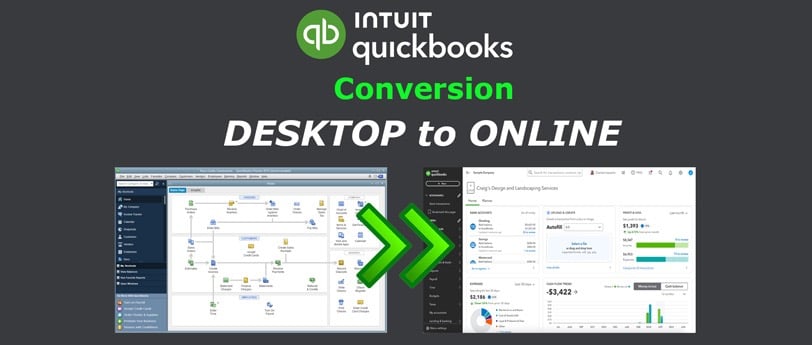📞 (858) 308-1100
✉️ contact@veslav.com
Converting from QuickBooks Desktop (QBDT) to QuickBooks Online (QBO)
4/24/20252 min read


Thinking of Switching from QuickBooks Desktop to QuickBooks Online? Here’s What You Need to Know.
If you’ve been using QuickBooks Desktop (QBDT) for years, the idea of moving to QuickBooks Online (QBO) may feel daunting. But as more businesses shift to cloud-based solutions for flexibility, automation, and real-time access, the switch is often worth it. That said, a smooth transition depends on knowing what to expect and preparing properly.
Here’s a practical guide to converting from QBDT to QBO – what’s involved, what to watch for, and how we can help you make the move seamlessly.
Why Consider Moving to QuickBooks Online?
Access from anywhere – Log in securely from any device with an internet connection.
Automatic backups and updates – No more manual software installs or data backups.
Real-time collaboration – Work with your bookkeeper or accountant without sharing files.
More automation – Bank feeds, recurring invoices, rules, and integrations save time.
Better reporting & dashboards – Improved visual insights into your business performance.
Before You Convert: Key Steps to Prepare
1. Clean up your QBDT file
Garbage in, garbage out. If your QBDT data has outdated accounts, unreconciled balances, or duplicate entries, they’ll carry over. Take time to:
Reconcile accounts
Merge duplicate vendors or customers
Clear old transactions (e.g. undeposited funds or uncleared checks)
2. Choose the right QBO version
QBO comes in several plans: Simple Start, Essentials, Plus, and Advanced. Not all Desktop features transfer, so compare your needs. For example:
Inventory? Choose QBO Plus or Advanced.
Class/location tracking? Avoid Simple Start.
More complex reporting or custom roles? Advanced is your best bet.
The Conversion Process: Step-by-Step
1. Set up your QBO account
Create your QBO subscription (free trial or paid) before you begin the migration.
2. Export your data from QBDT
From the Company menu, select Export Company File to QuickBooks Online, and follow the prompts. Make sure:
You’re using a supported version of QBDT
Your file is under the size limit (generally <350,000 targets)
3. Check what data transfers – and what doesn’t
QBO transfers most lists and transactions, but some features won’t come over:
Custom reports and templates
Memorized transactions
Fixed asset items
Bank reconciliations
You’ll need to recreate some elements manually after the move.
4. Verify the results
After the transfer:
Run reports in both QBDT and QBO to compare balances
Reconnect your bank feeds and payroll
Re-set up users, recurring transactions, and custom templates
Post-Migration Best Practices
Double-check A/R, A/P, and bank balances.
Reconcile bank and credit card accounts from the date of migration.
Adjust settings in QBO to match your business (e.g. invoice terms, tax settings).
Customize dashboards and reports to your liking.
How We Can Help
Switching to QBO is more than just clicking a few buttons – it’s about preserving your financial accuracy and keeping operations running smoothly. Our team helps small businesses:
Clean up their QBDT file before conversion
Choose the right QBO plan based on needs
Migrate the data properly and check for discrepancies
Recreate templates, bank feeds, and automation rules
Train your team to confidently use the new platform
Let us help you make the switch with confidence. Reach out today to discuss your QBDT to QBO migration.
Veslav Consulting
Simplifying Your Finances,
Empowering Your Growth
Contact Us
Join our newsletter list
858-308-1100
© 2025 Veslav Consulting. All rights reserved.
